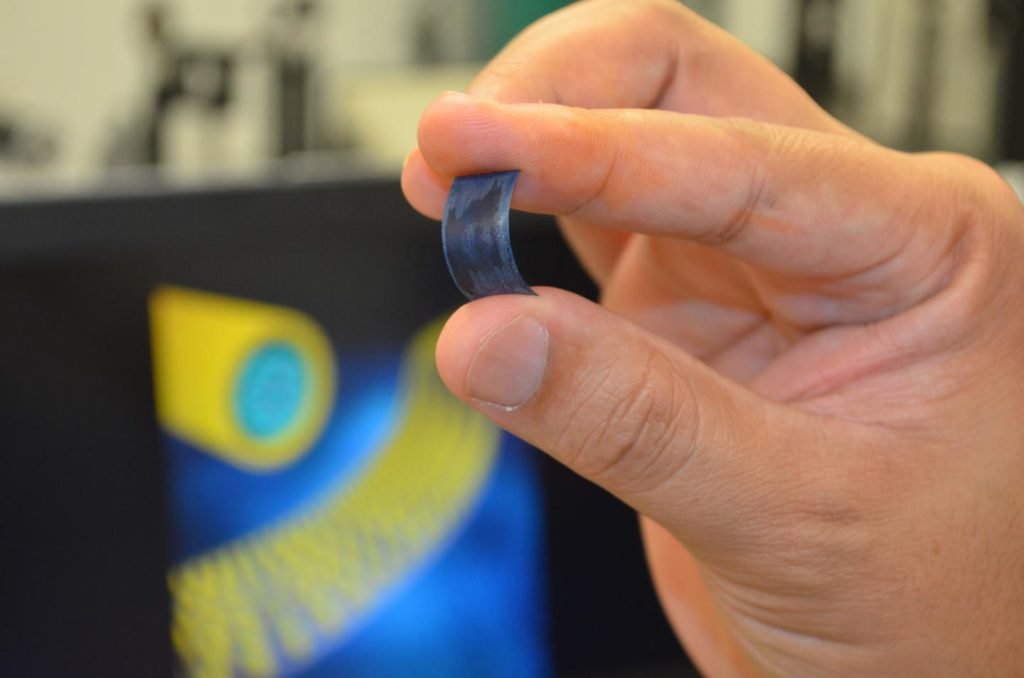
讓行動裝置在幾分鐘內充飽電,仍然是能量儲存研究人員們積極追求的神聖目標。如今,美國中央佛羅里達大學(University of Central Florida;UCF)的研究人員團隊開發出能夠比一般電池儲存更多能量且經成千上萬次充放電也不至於導致性能退化的軟性超級電容,進一步實現這一里程碑。
來自中央佛羅里達大學奈米科學技術中心(NanoScience Technology Center)的研究團隊宣稱,採用高度最佳化的超級電容,取代一般的行動裝置與電動車電池,即可實現超快速充電的性能。
在進行測試期間,超級電容在經過30萬次以上的充電後,並未失去其能量儲存的功能,這將有助於解決導致鋰離子電池在使用18個月後電荷減少的性能退化問題。此外,超級電容的充電速度也比一般電池更快。
美國中佛羅里達大學的研究團隊開發出軟性超級電容,能夠儲存比一般電池更多的能量,同時,經過300,000次以上的充放電,也不至於使其儲能性能退化。(來源:University of Central Florida)
「如果用這些超級電容取代一般電池,你就可以在幾秒鐘內為手機充飽電,而不需要一星期充電好幾次了,」負責這項研究的UCF博士後研究人員Nitin Choudhary表示。這項研究並發表於最新的《ACS Nano》期刊中。
Choudhary與其他研究人員開發這項技術的關鍵在於使用奈米材料,進一步縮減了超級電容的尺寸——超級電容通常要比一段鋰離子電池更大,才足以儲存相當的能量。
具體來說,研究團隊嘗試將新發現的二維材料應用於只有幾個原子厚度的超級電容器上,開發出一種簡單的化學合成方法,整合現有的材料與這些新材料。
其結果是具有高導電核的超級電容,由塗覆二維材料外殼的數百萬條奈米線所組成。研究人員解釋,該核心可為快速充放電實現快速的電子轉移,同時均勻塗覆的二維材料外殼則產生高能量與功率密度。
這項研究成果是首次展示二維材料在能量儲存應用的潛力。「對於小型電子裝置,我們的材料在能量密度、功率密度和週期穩定性方面都超越了世界上的一般材料,」Choudhary說。
UFC奈米科學技術中心、材料科學與工程系助理教授Yeonwoong “Eric” Jung,是這項研究的主要研究人員,目前正與UCF的技術轉移辦公室合作,針對研究團隊開發的新技術申請專利。
雖然這項研究仍待概念驗證,而不是準備好商業化的成果,但他表示,這項研究成果可望在未來的行動裝置與電動車領域開啟更多應用前景。

Two-dimensional (2D) transition-metal dichalcogenides (TMDs) have emerged as promising capacitive materials for supercapacitor devices owing to their intrinsically layered structure and large surface areas. Hierarchically integrating 2D TMDs with other functional nanomaterials has recently been pursued to improve electrochemical performances; however, it often suffers from limited cyclic stabilities and capacitance losses due to the poor structural integrity at the interfaces of randomly assembled materials. Here, we report high-performance core/shell nanowire supercapacitors based on an array of one-dimensional (1D) nanowires seamlessly integrated with conformal 2D TMD layers. The 1D and 2D supercapacitor components possess “one-body” geometry with atomically sharp and structurally robust core/shell interfaces, as they were spontaneously converted from identical metal current collectors via sequential oxidation/sulfurization. These hybrid supercapacitors outperform previously developed any stand-alone 2D TMD-based supercapacitors; particularly, exhibiting an exceptional charge–discharge retention over 30,000 cycles owing to their structural robustness, suggesting great potential for unconventional energy storage technologies.
編譯:Susan Hong
(參考原文:Flexible Supercapitors Can Charge Devices and EVs in Seconds,by Elizabeth Montalbano)
Source:http://pubs.acs.org/doi/ipdf/10.1021/acsnano.6b06111



 留言列表
留言列表